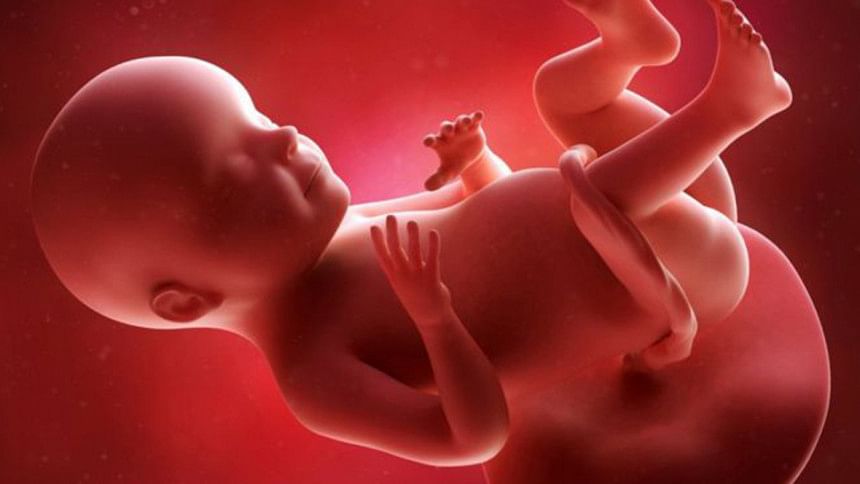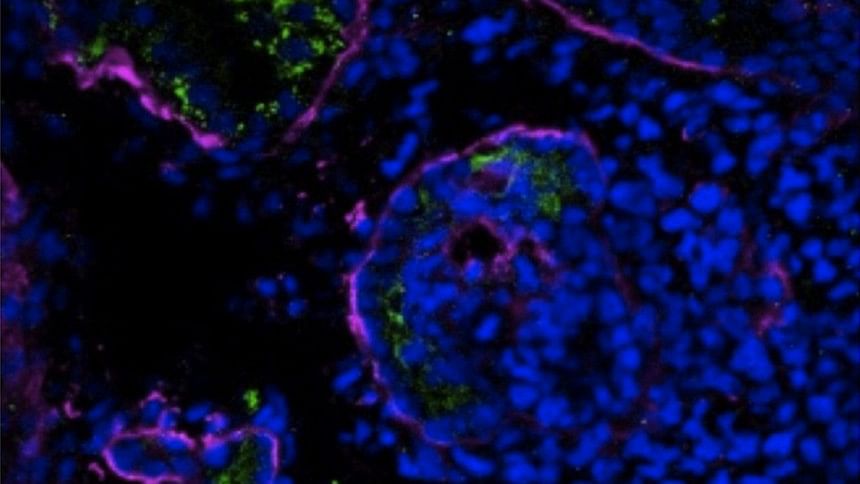First ‘in womb’ stem cell trial planned

The first clinical trial injecting foetal stem cells into babies still in the womb has been announced.
It is hoped the cells, which are able to transform into a range of tissues, will lessen symptoms of incurable brittle bone disease.
The trial, starting in January, will be led by Sweden's Karolinska Institute and in the UK by Great Ormond Street Hospital.
The stem cells will come from terminated pregnancies.
Brittle bone disease, officially called osteogenesis imperfecta, affects around one in every 25,000 births.
It can be fatal with babies born with multiple fractures. Even those who survive face up to 15 bone fractures a year, brittle teeth, impaired hearing and growth problems.
It is caused by errors in the developing baby's DNA - their blueprint of life - that mean the collagen supposed to give bone its structure is either missing or of poor quality.
The donated stem cells should provide the correct instructions for growing bone.
'Reduce fractures'
Prof Lyn Chitty, from Great Ormond Street Hospital, will carry out genetic testing to search for the defects that lead to the condition.
She told the BBC News website: "This is a very serious disease. Our objective is to see if in utero (in the womb) stem cell therapy can ameliorate the condition and the number of fractures."
A type of stem cell which develops into healthy bone, cartilage and muscle will be infused directly into the affected foetuses.
Fifteen babies will have the infusion in the womb and again after they are born.
A further 15 will only have the treatment after birth and the number of fractures will be compared with untreated patients.
Adam, from Farnborough in Hampshire, was born with broken arms and a fracture in his spine.
He says his main problem growing up was "learning to be sensible" when "as a kid you just want to run around and have fun with mates".
Whenever he played football he would have to go in goal to minimise the risk.
He cannot keep track of how many times he's broken his bones, but puts the figure somewhere between 30 and 40.
Adam says he has fewer fractures than other people with osteogenesis imperfecta, but takes longer to heal.
In May 2009 he broke his leg. Six years and 12 operations later it has still not fully recovered. His left leg is four inches shorter than his right.
"Day-to-day life is awkward. If someone stubs their toe on a table they go 'Ow!' - for me it's 'Did I break my toe'?" he says.
But Adam, now 21, does not feel that the condition has held him back in life.
Last week he graduated with a first class honours degree in accounting and finance and is already working.
He says: "The idea of a cure coming out or something to help at such an early age is just fantastic news."
Dr Cecilia Gotherstrom, from the Karolinska Institute, told the BBC: "If we could reduce the fracture frequency, strengthen bone and improve growth it would have a huge impact."
Stem cell transplants appear to ease symptoms in children. Starting even earlier when the bone is developing and growing rapidly has the potential to be more effective.
"In-the-womb" foetal stem cell transplants have been tried in two cases of osteogenesis imperfecta. But without a proper clinical trial it is impossible to know how effective the therapy is.
Medical first
Dr Gotherstrom added: "It is the first in-man trial and, if successful, it will pave the way for other prenatal treatments when parents have no other option."
She said muscle disorders such as Duchenne muscular dystrophy and other bone disorders could one day benefit from such therapies.
The first infusion will take place 20 to 34 weeks into the pregnancy. This is after the gonads have formed and there should be no risk of the donated cells becoming part of the recipient's sperm or eggs.
Any risk of the donated tissue being rejected in the same way as an organ transplant is thought to be low.
Question of proof?
Commenting on the trial, Dr Dusko Ilic, a reader in stem cell science at King's College London, told the BBC: "Any attempt to help the patients suffering this terrible, debilitating disease is more than welcome."
However, he warned the disease varied so widely from patient to patient that it could be difficult to prove how effective the stem cells were.
He added: "People with the same type of osteogenesis imperfecta may present a different clinical picture, even within the same family.
"At the same time, cellular therapy is unlikely to work to the same extent in different individuals.
"How will we know whether a milder phenotype (symptoms) in a child that received the treatment is natural or is a result of the treatment?"
The trial will start in January and will recruit patients for two years.


 For all latest news, follow The Daily Star's Google News channel.
For all latest news, follow The Daily Star's Google News channel. 



Comments